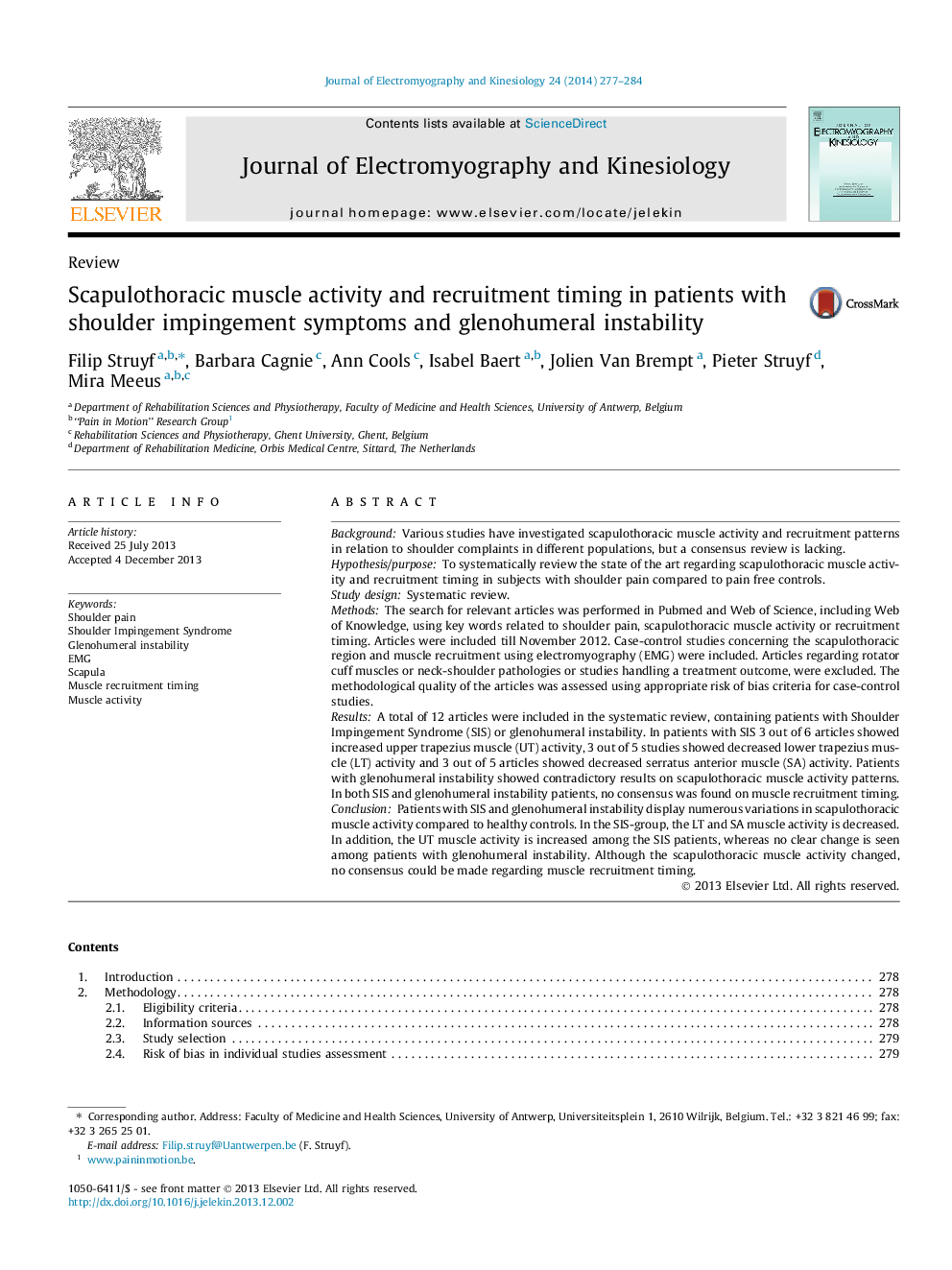| Article ID | Journal | Published Year | Pages | File Type |
|---|---|---|---|---|
| 4064666 | Journal of Electromyography and Kinesiology | 2014 | 8 Pages |
BackgroundVarious studies have investigated scapulothoracic muscle activity and recruitment patterns in relation to shoulder complaints in different populations, but a consensus review is lacking.Hypothesis/purposeTo systematically review the state of the art regarding scapulothoracic muscle activity and recruitment timing in subjects with shoulder pain compared to pain free controls.Study designSystematic review.MethodsThe search for relevant articles was performed in Pubmed and Web of Science, including Web of Knowledge, using key words related to shoulder pain, scapulothoracic muscle activity or recruitment timing. Articles were included till November 2012. Case-control studies concerning the scapulothoracic region and muscle recruitment using electromyography (EMG) were included. Articles regarding rotator cuff muscles or neck-shoulder pathologies or studies handling a treatment outcome, were excluded. The methodological quality of the articles was assessed using appropriate risk of bias criteria for case-control studies.ResultsA total of 12 articles were included in the systematic review, containing patients with Shoulder Impingement Syndrome (SIS) or glenohumeral instability. In patients with SIS 3 out of 6 articles showed increased upper trapezius muscle (UT) activity, 3 out of 5 studies showed decreased lower trapezius muscle (LT) activity and 3 out of 5 articles showed decreased serratus anterior muscle (SA) activity. Patients with glenohumeral instability showed contradictory results on scapulothoracic muscle activity patterns. In both SIS and glenohumeral instability patients, no consensus was found on muscle recruitment timing.ConclusionPatients with SIS and glenohumeral instability display numerous variations in scapulothoracic muscle activity compared to healthy controls. In the SIS-group, the LT and SA muscle activity is decreased. In addition, the UT muscle activity is increased among the SIS patients, whereas no clear change is seen among patients with glenohumeral instability. Although the scapulothoracic muscle activity changed, no consensus could be made regarding muscle recruitment timing.
